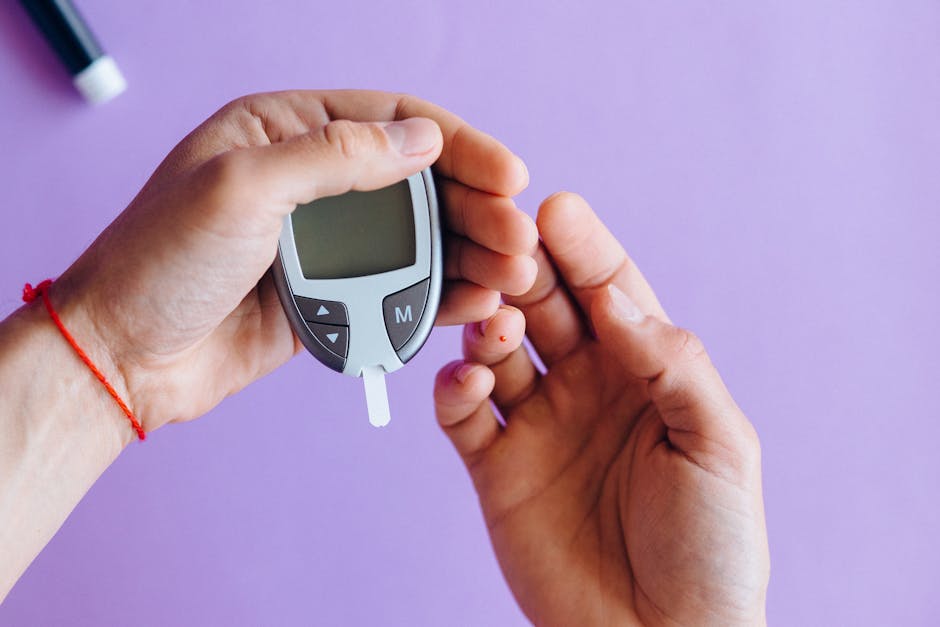Government Backed Glucose Monitoring Programs
Glucose monitoring is an essential aspect of managing diabetes, a condition that affects millions worldwide. With diabetes cases on the rise, governments in many countries are recognizing the importance of providing accessible and affordable glucose monitoring solutions to their populations. Government-backed glucose monitoring programs aim to address this need by making advanced monitoring technologies available to individuals from various socioeconomic backgrounds.

These programs are designed to empower patients with timely health data, enabling better disease management and reducing long-term complications associated with diabetes.
Understanding Government-Backed Glucose Monitoring Programs
Government-backed glucose monitoring programs are initiatives funded or supported by national or regional authorities to ensure individuals living with diabetes have access to reliable glucose monitoring tools. These programs may include subsidies for glucose monitoring devices, free distribution of supplies, or partnerships with healthcare providers to improve patient education and support.
One example of such initiatives is the UK’s National Health Service (NHS), which provides FreeStyle Libre systems for eligible patients. This flash glucose monitoring system allows individuals to track their blood sugar levels without finger pricks, offering a more convenient solution for diabetes management. According to NHS guidelines, individuals who meet specific clinical criteria can receive these devices at no cost through government funding. Similarly, in Canada, certain provinces offer reimbursement for continuous glucose monitors (CGMs) under public health insurance plans.
The goal of these programs is not only to improve individual health outcomes but also to reduce the financial burden on healthcare systems. Early intervention and consistent monitoring can prevent severe complications like kidney failure, cardiovascular diseases, and neuropathy, which often result in costly treatments or hospitalizations.
The Impact of Technology on Glucose Monitoring Programs
Advancements in technology have significantly shaped the effectiveness of government-backed glucose monitoring programs. Continuous glucose monitors (CGMs) and flash glucose monitors represent a shift from traditional fingerstick methods to more seamless and less invasive options. These devices provide real-time glucose readings and trends, enabling individuals and healthcare providers to make informed decisions about treatment adjustments.
CGMs like the Dexcom G6 offer smartphone integration, sending alerts when blood sugar levels are too high or low. This feature is especially beneficial for parents managing their child’s diabetes or for individuals who experience hypoglycemic unawareness. Studies published in journals such as Diabetes Journals indicate that consistent use of CGMs can lead to improved glycemic control and reduced HbA1c levels over time.
Governments are leveraging these technological advancements by incorporating them into public health policies. The Australian government introduced subsidies for CGMs through its National Diabetes Services Scheme (NDSS), making them more accessible to children under 21 years old and other priority groups. Such measures underscore the role of innovation in expanding the reach and efficacy of these programs.
Challenges in Implementing Government-Backed Programs
Despite their benefits, implementing government-backed glucose monitoring programs comes with challenges. Budget constraints often limit the scope of these initiatives, leaving some individuals unable to access the latest technologies. Disparities in healthcare infrastructure across regions can create barriers to program effectiveness.
In developing nations where healthcare systems may already be strained, funding comprehensive glucose monitoring programs can be difficult. Many countries in Africa lack sufficient resources to provide CGMs or even basic glucometers to all who need them. Efforts by organizations like the International Diabetes Federation (IDF) aim to bridge these gaps through global partnerships and advocacy for increased funding.
Another challenge lies in educating patients on how to use advanced monitoring devices effectively. Simply providing access is not enough; patients must understand how to interpret data and make lifestyle changes based on their readings. Governments must invest in training healthcare professionals and launching awareness campaigns alongside device distribution efforts.
A Comparative Overview: Global Efforts
The approaches taken by different countries vary depending on their healthcare priorities and economic resources. Below is a comparative table showcasing examples of government-backed glucose monitoring initiatives worldwide:
| Country | Program/Initiative | Key Features |
|---|---|---|
| United Kingdom | NHS FreeStyle Libre Program | Provides flash glucose monitors free of charge for eligible patients meeting specific clinical criteria. |
| Canada | Provincial Reimbursement Programs | Covers CGM costs under public health insurance in provinces like Ontario and British Columbia. |
| Australia | National Diabetes Services Scheme (NDSS) | Subsidizes CGMs for children under 21 and other priority groups at minimal or no cost. |
| India | Arogya Karnataka Scheme | Focuses on subsidized glucometers and strips for low-income families while promoting awareness campaigns. |
| United States | Medicare Coverage for CGMs | Covers specific CGM devices under Medicare Part B for seniors with diabetes who meet eligibility requirements. |
This global perspective highlights both progress and disparities in access to essential diabetes care tools across regions.
The Road Ahead: Prioritizing Accessibility and Awareness
For government-backed glucose monitoring programs to achieve their full potential, accessibility and awareness must remain top priorities. Subsidies alone cannot solve the issue if individuals are unaware of available resources or face difficulties navigating eligibility criteria. Proactive outreach efforts involving community health workers, local clinics, and online platforms can help bridge this gap.
Collaboration between governments, private sector players like device manufacturers, and non-profit organizations can amplify program effectiveness. Partnerships such as those formed under India’s Ayushman Bharat initiative demonstrate how shared responsibility can enhance healthcare delivery at scale.
A focus on preventive care through early detection is also crucial. Governments should consider expanding screening initiatives alongside their glucose monitoring programs. Identifying individuals at risk of developing diabetes can help delay onset or prevent complications altogether, a win-win for both patients and public health systems.
The success of these programs ultimately lies in collective effort, individuals taking charge of their health with tools provided by governments that prioritize equitable access for all citizens.
The integration of technology into healthcare has opened new doors for managing chronic conditions like diabetes. Programs backed by governments worldwide reflect a growing commitment toward better health outcomes through innovation and inclusivity.
